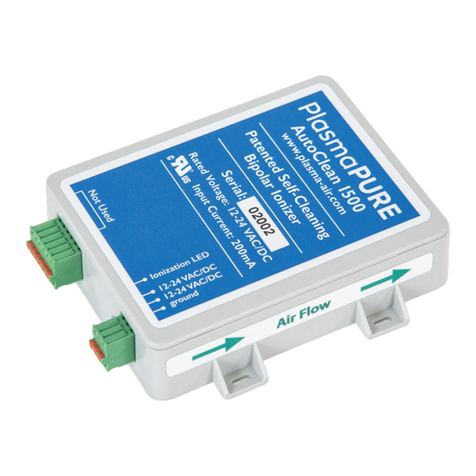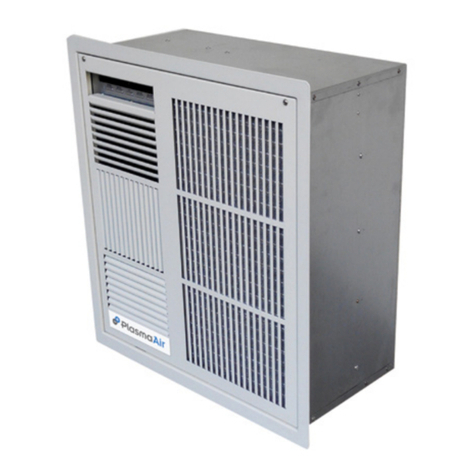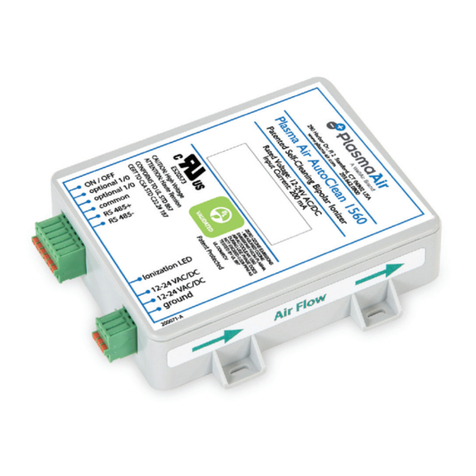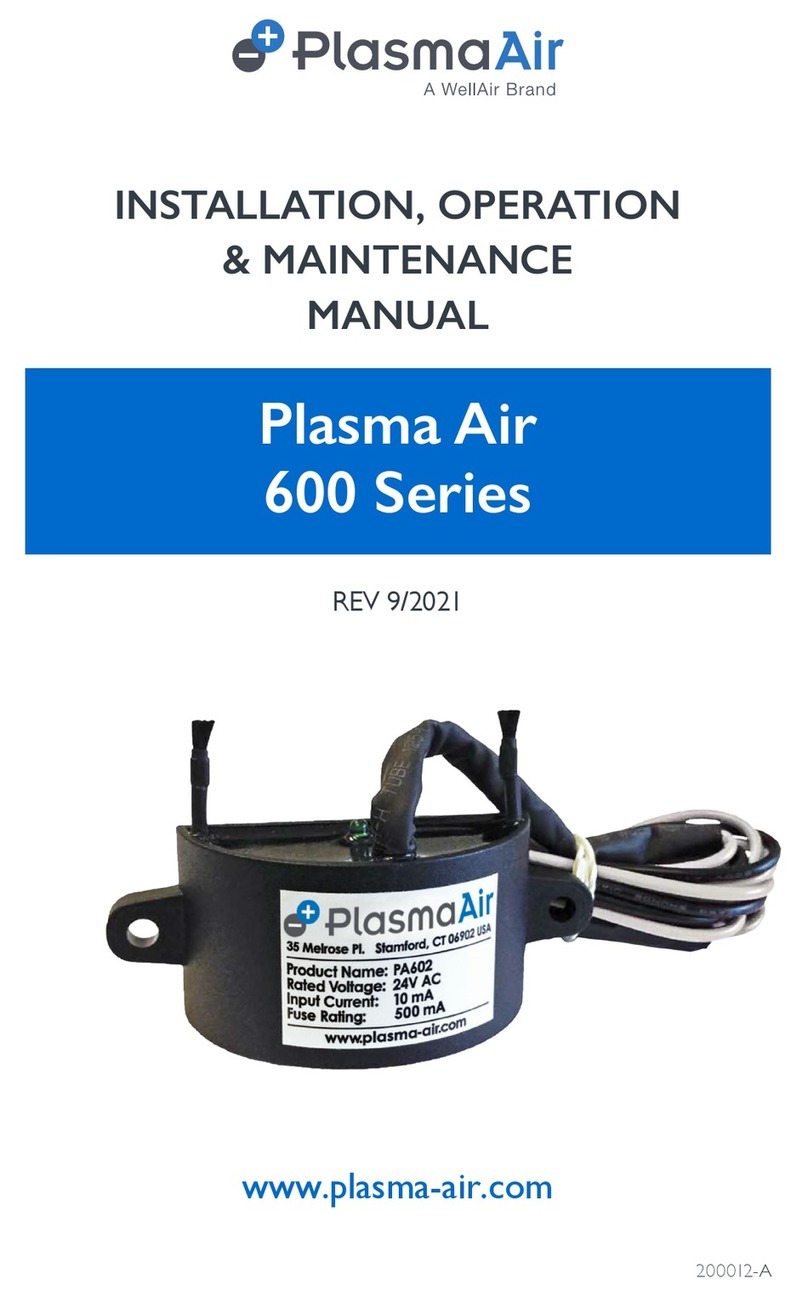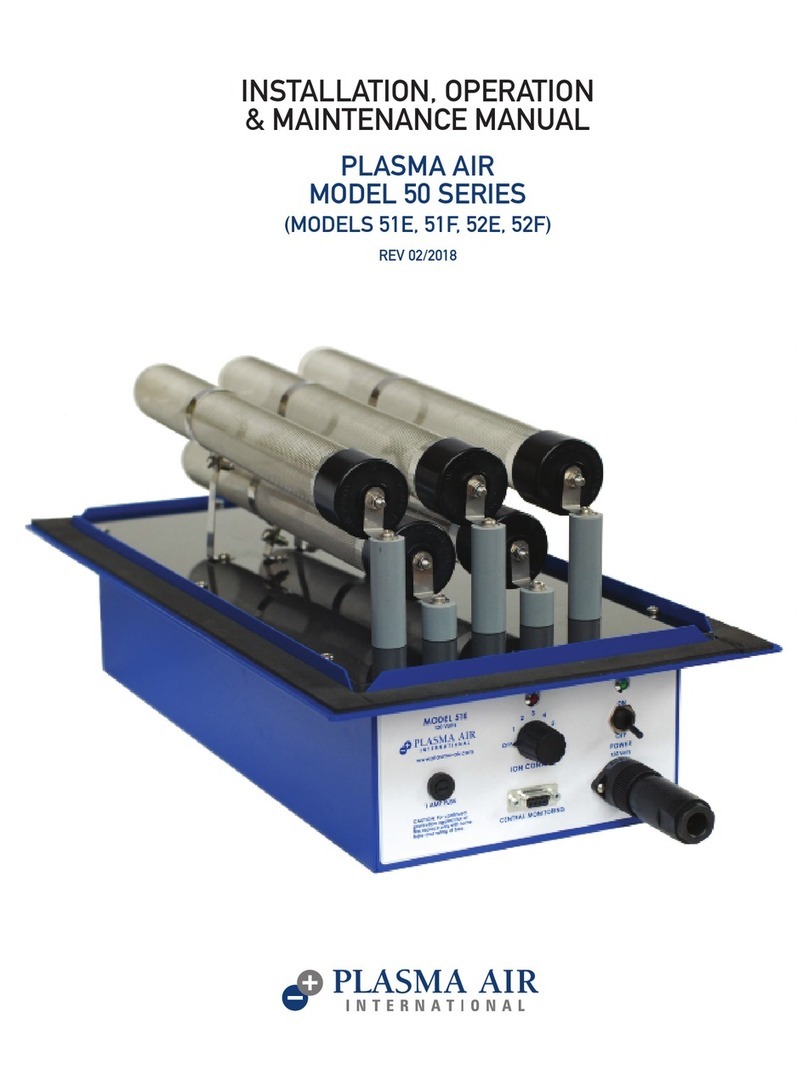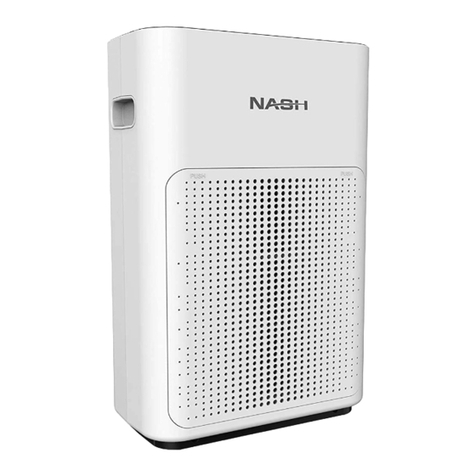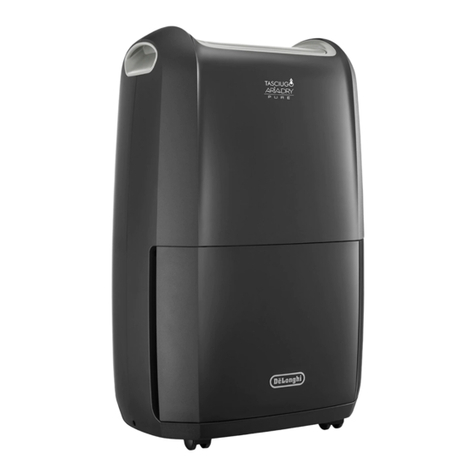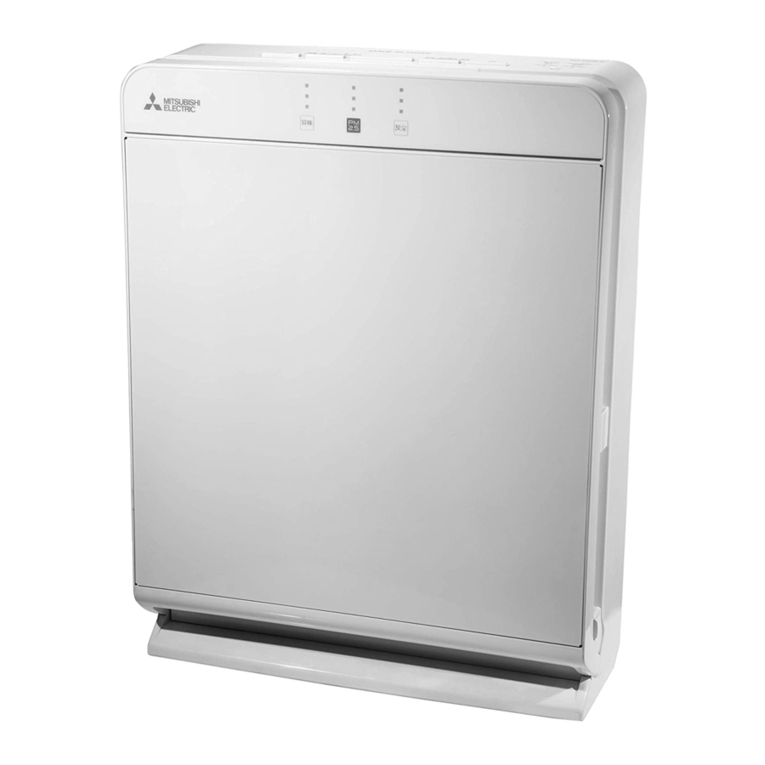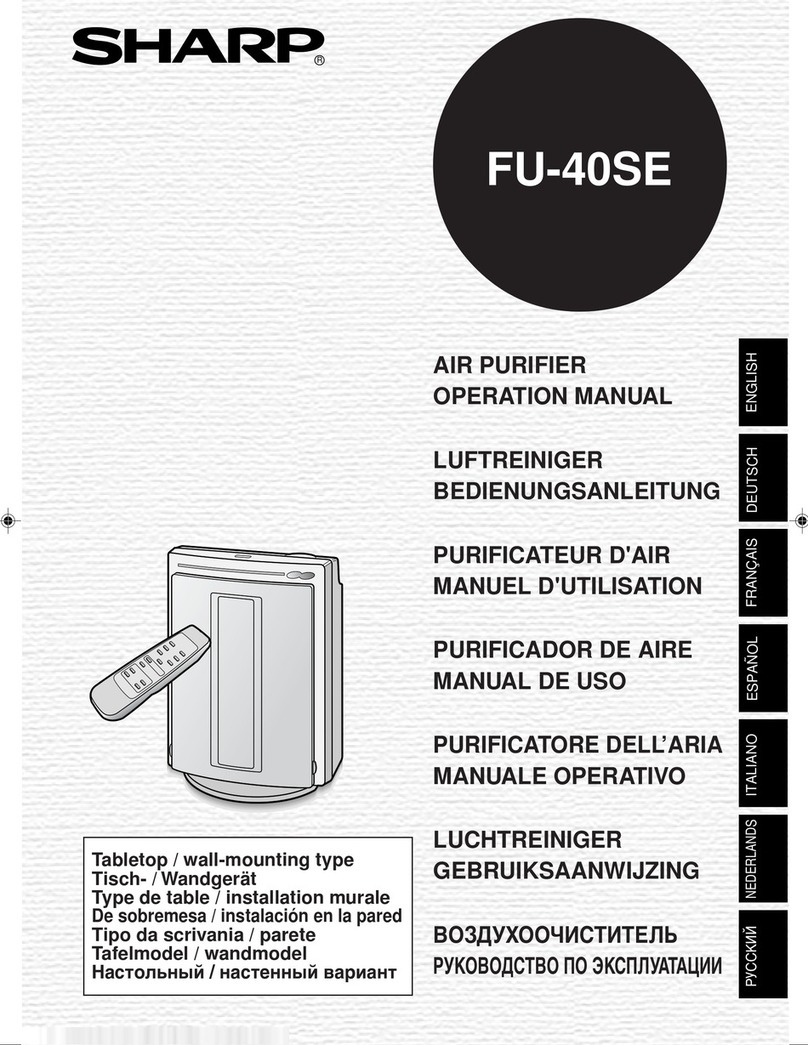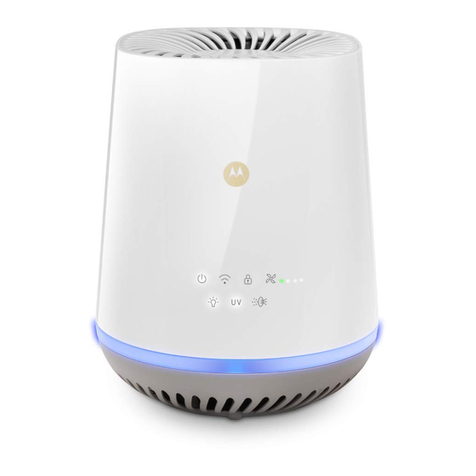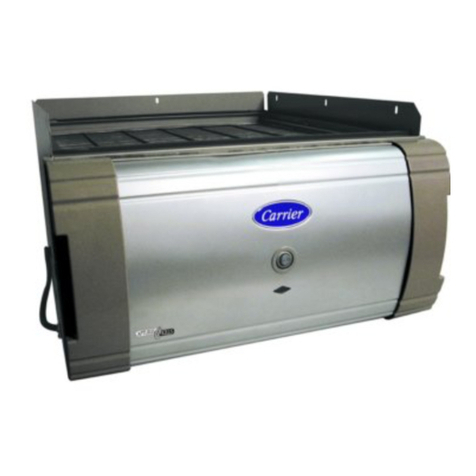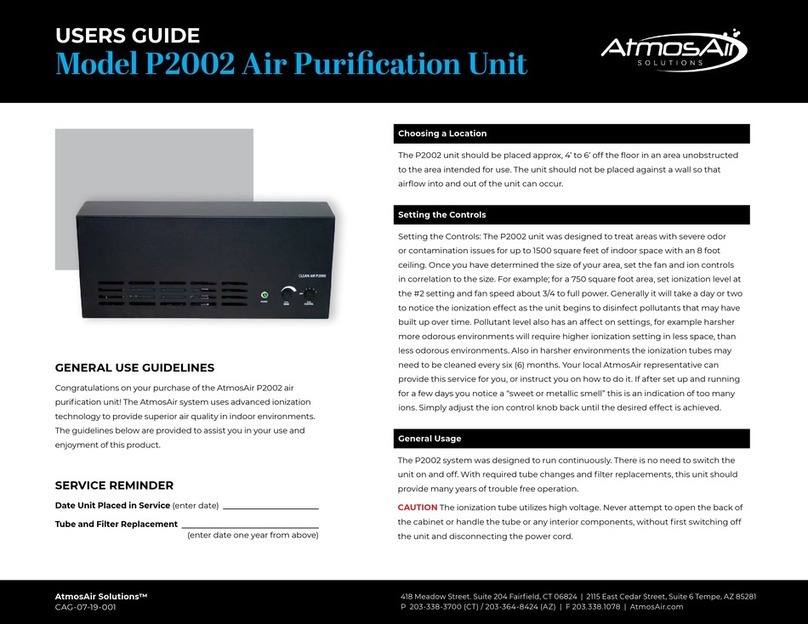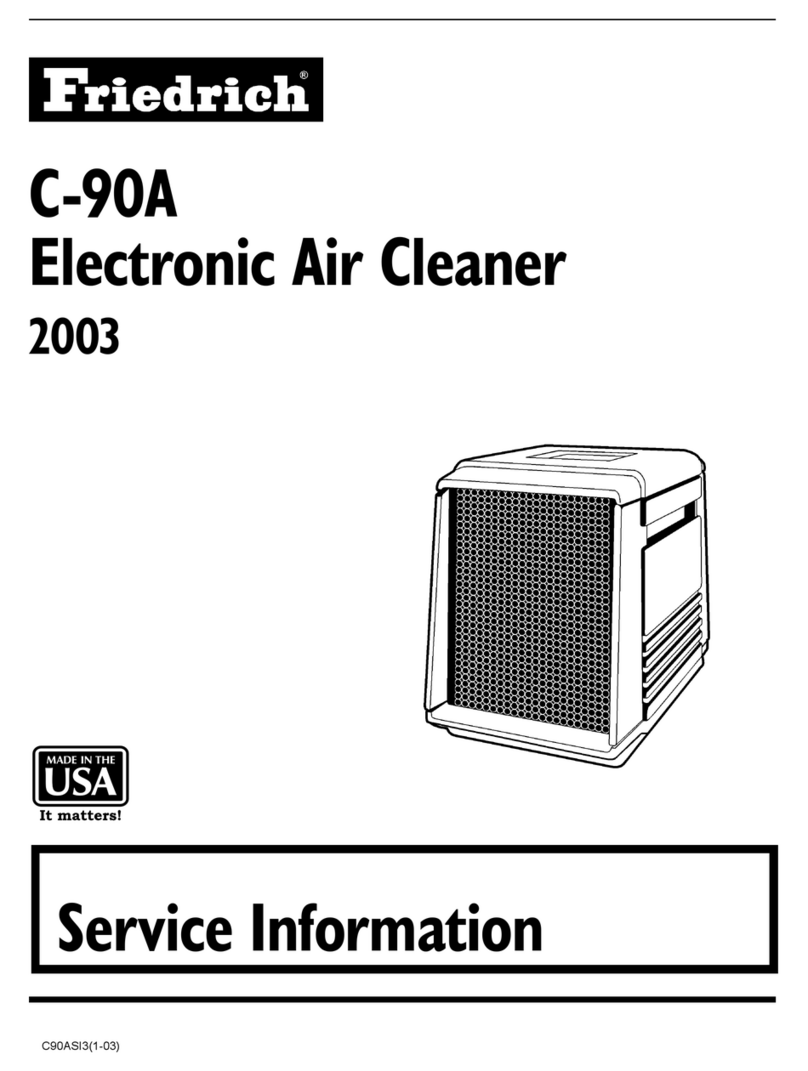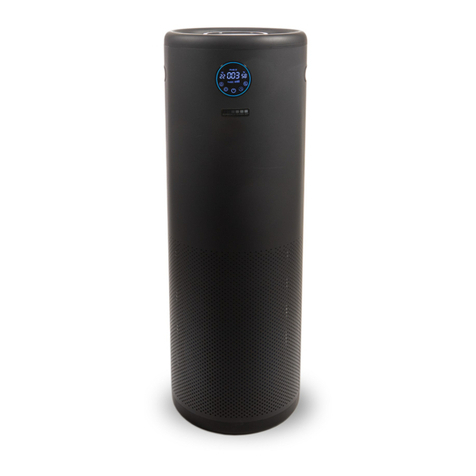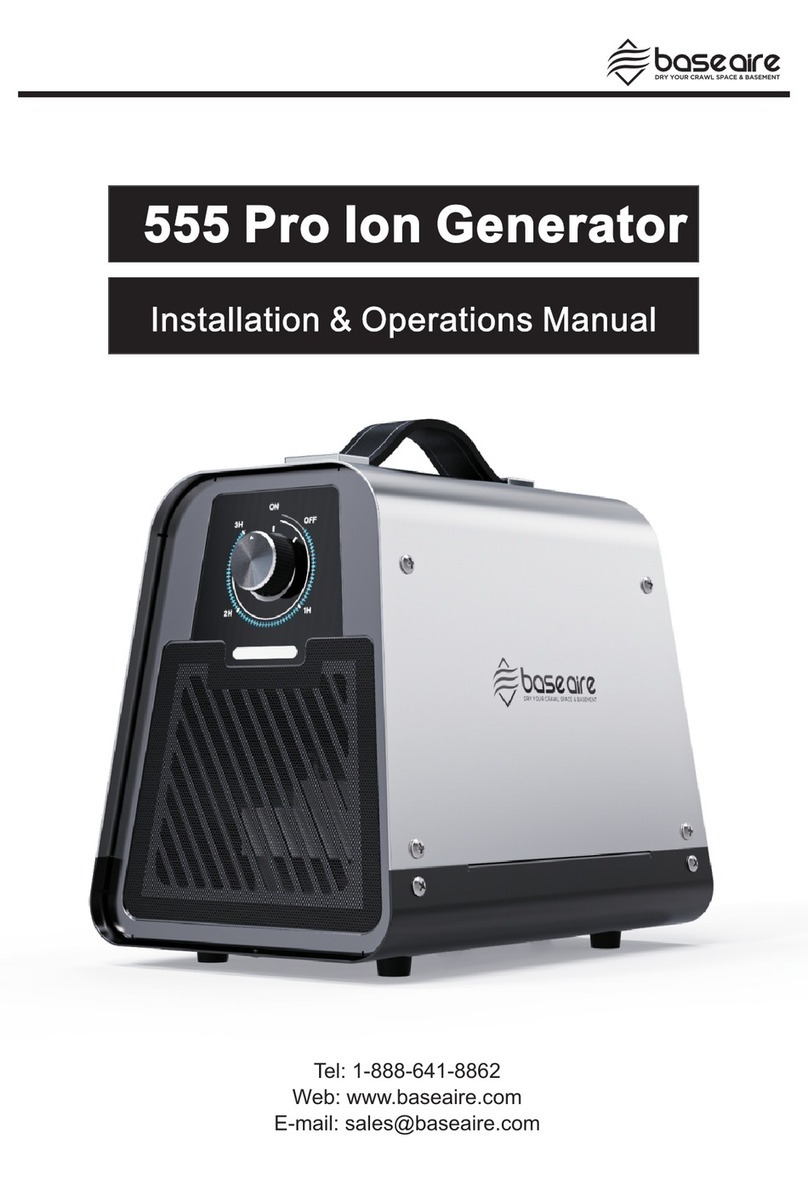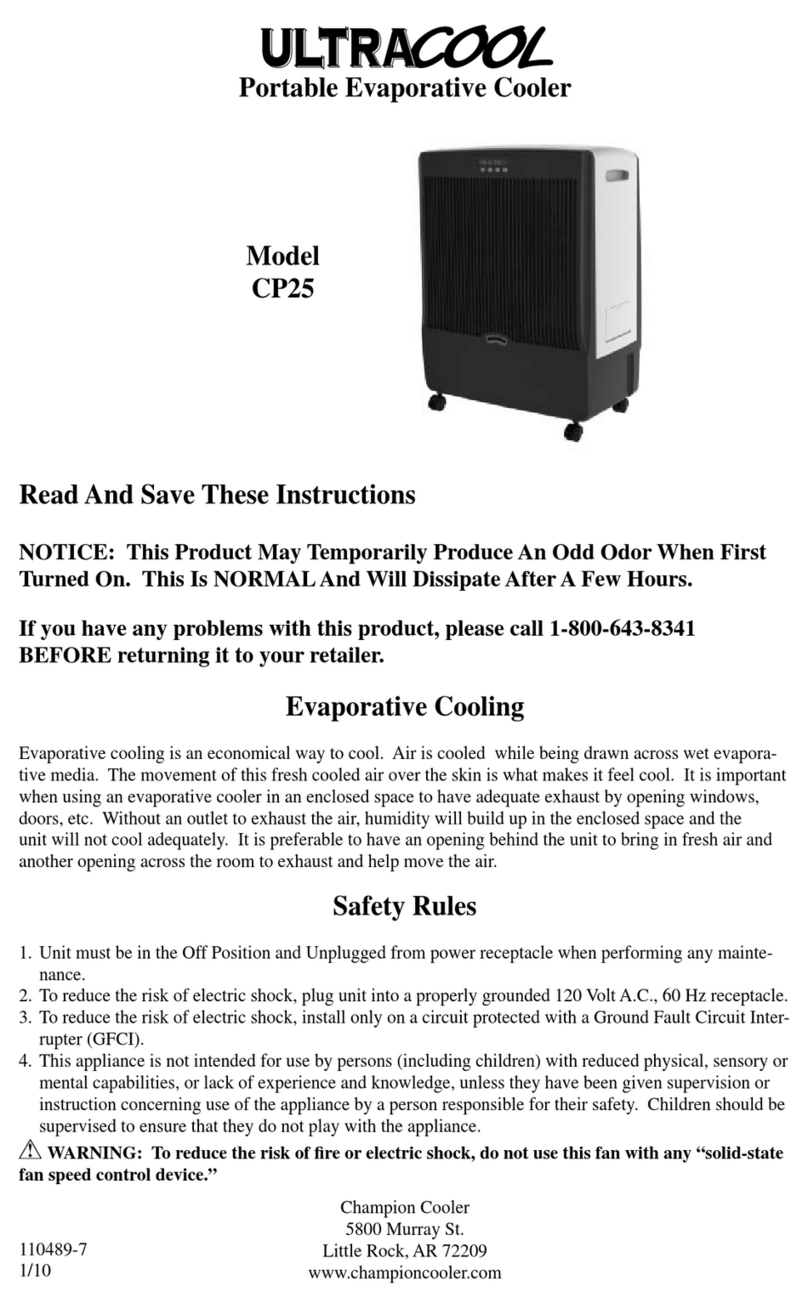
MAINTENANCE
WARNING: The secondary voltage to the ionizing tubes can be 2,900 Volts AC. Always disconnect
power to the unit and switch the power to the “off” position before performing any maintenance.
Depending on the severity of the pollutant, the upstream ltration and the maintenance schedule, the tubes are rated
for 17,600 hours of service and should be replaced at that interval. Contact your local Plasma Air Distributor to
purchase replacement tubes, www.plasma-air.com.
TROUBLESHOOTING
If the unit is not working, check in the following order that:
1. The ionization adjustment knob is in between “1” and “5” and that the green light illuminates.
2. The 0.5 amp, glass cartridge fuse is not blown. The fuse is located in the power inlet tting. The fuses are 5mm ×
20mm rated at 250 volts and are available at any electrical supply store.
3. If the unit fuse is blown, remove the tube and replace the fuse. Turn on power to the unit. If the fuse blows again,
return the unit to the distributor for factory service.
4. If the fuse does not blow, the most likely problem is a defective tube. Carefully inspect the tube for cracks.
Although rare, cracks can occur at the capped end of the tube.
5. If the tube has been subjected to high temperatures, above 140º F, there is a possibility of a pin hole defect. These
are difcult to spot, but can cause shorting of the tube. Install the tube into the unit and power the unit. If the fuse
blows, the tube is defective and requires replacement.
6. If there seems to be a loss of effectiveness, check the tubes and clean them if necessary. If the tubes are more than
two years old, replace them.
PRODUCT SELECTION
Selecting the proper ionization equipment is important for achieving all the benets from the ionization system. In
commercial or industrial projects, pollutants such as airborne particles from smoke, dust, spores; VOCs from cleaning
supplies, glues, paints, or other chemicals; odors from locker rooms, cooking, nursing homes, industrial processes;
and even health related concerns from mold, bacteria, and viruses all contribute to poor indoor air quality. The
information below will guide you through the process.
ANormal residential, ofce, or classroom space - low pollutant levels
BDay care center, nursing home, food processing facility, restaurant - medium pollutant levels
CAnimal hospital, casinos, light manufacturing, smoking areas, nail/beauty salons - heavy pollutant levels
DIndustrial facility, heavy manufacturing, or garbage room - very heavy pollutant levels
EHeavy pollution or odors typical of a waste water treatment facility
POLLUTANT LOAD FACTOR
PLASMA AIR 35 MELROSE PLACE, STAMFORD, CT 06902
phone 203-662-0800 fax 203-662-0808 www.plasma-air.com info@plasma-air.com
PA-US-IOM-003-REV1
© 2019 All rights reserved
POLLUTANT LOAD FACTOR
1,000 2,000 3,000 5,000 10,000 20,000
A(1)100C (1)100D (1)100E (1)200E (1)50F (2)50F
B(1)100D (1)100E (1)200E (1)50E (2)50E (3)50F
C(1)100E (1)200E (1)50E (1)50F (2)50F (4)50F
D(1)200E (1)50E (1)50F (2)50F (4)50F (8)50F
E*Consult Plasma Air Engineering Department for Engineering Support
SQUARE FOOTAGE SERVED BY AIR HANDLER
